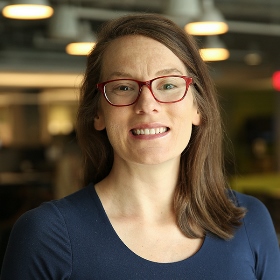Developing and retaining talent is a perennial issue for NGOs around the globe. It’s a source of worry, for some, as they carefully monitor employee turnover. It’s a source of opportunity for others. Most organisations, even the ones firing on all cylinders today, know they still need to prepare for tomorrow.
“Our programs were expanding very quickly, and we are often in a state of ‘catching up’ to ensure we have sufficient middle-level managers,” says Arthur Ling, CEO of Singapore’s Fei Yue Community Services, a multi-service organisation which serves 80,000 people a year, from the very young to the elderly. “We didn’t have a framework about how to grow leaders in a systematic way.”
Today, Fei Yue is implementing an approach to talent development designed to grow future leaders from within its organisation. Managers and staff work together on a few simple practices, which complement performance assessment as part of a talent development system and help build an organisational culture that embraces professional growth.
Define great leadership by crafting competencies that reflect your organisation’s goals and values. Competencies are the unique set of skills and capabilities that team members need to perform their work today—and prepare for their work to come—to ensure the organisation’s future success. Examples of commonly used leadership competencies include decision making, communication, and people development.
“Our reputation is that Fei Yue provides good supervision. We’re proud of it—and it attracts people to join us, or to rejoin us if they’ve left,” says Ling. “So we see it as very important to develop staff competency in supervision. What should happen in a supervision session? What skills do they need? We’re trying to use a common language so we have alignment across divisions about the competencies that are needed for supervisors.”
Co-create professional development plans that build staff skills and capabilities using a 70-20-10 approach. “70-20-10” means 70 percent on-the-job learning, 20 percent coaching and mentoring, and 10 percent formal learning.
Getting Started
Our “Nonprofit Leadership Development Toolkit” can help you jump-start your own leadership development process. It has ready-to-use templates and resources, including sample competencies drawn from our competency bank, a 70-20-10 development plan template, and more. It also provides guidance on rolling out and implementing this approach to investing in future leaders in your organization’s systems and culture.
“We were spending about 4 percent of our total budget on staff development, but it was going to formal trainings,” explains Ling. “Staff felt overwhelmed—how were they supposed to apply what they were learning?”
The 70-20-10 framework provides a different way of thinking about talent development, while emphasizing on-the-job learning over formal training. On-the-job professional development activities don’t need to be on a grand scale, such as a big stretch opportunity or a new project. Instead, it’s entirely possible for staff to get hands-on experience within an organisation’s day-to-day operations. Plan for incremental and deliberate growth opportunities to avoid overwhelming people with additional responsibilities.
And think hard about whether these opportunities are being given out fairly. Research has found that women, for example, often shoulder the burden of less “promotable” extra work (“office housework”), while men more often get high-profile special assignments. Meaningful stretch roles can be scarce resources, and leaders need to make sure they are being thoughtful about who gets those roles and whether this reflects the organisation’s equity and diversity goals.
Coaching and mentoring likewise need to be deliberate. The best coach or mentor isn’t always a manager. It should be someone with the right skills or expertise—who may even be outside the organisation.
Ling, like many leaders we’ve worked with, is modelling the mentoring relationship from the top. “One thing I’m working on is my ability to conduct strategic planning with my senior management,” he says. “I have two mentors I check in with about strategic planning to get input on what I can do better. And I need to practice finding where I can hone the skills [to lead Fei Yue]—every year I learn new things.”
Support consistent development conversations (“check-ins”) between managers and direct reports to put plans into action. For many organisations, crafting a set of competencies and creating professional development plans using a 70-20-10 approach will be a new way of formally developing leaders. “Formally” is the key word here. The approach isn’t self-executing, and it needs attention from senior leadership to keep things moving ahead amid the day-to-day pressures of getting the organisation’s work done.
To ensure that the whole process ends up being more than just paperwork in a proverbial (or literal) file cabinet, organisations carve out time at least a couple of times a year—and, ideally, more often—for managers and each direct report they supervise to have productive conversations about their development.
We recommend that these development conversations, or “check-ins,” happen at least quarterly. Some pairings prefer a more frequent pacing—like every six weeks—to keep the momentum going. A development check-in should be a two-way conversation in which a manager and direct report reflect on the plan, solve problems that have arisen, and provide feedback to each other on what is going well and how to improve.
* * *
The work of investing in future leaders is vital to most organisations’ futures and the missions they pursue. For Fei Yue, says Ling, “this is essential to us for developing quality programs and services and building a competent and sustainable workforce.”
At its best, this investment supports a virtuous cycle—when people of all backgrounds see and experience growth, they become better at their jobs, are more committed to their organisation’s mission, and are more likely to stay with their organisation. And when they experience that growth themselves, they are more likely to commit to helping the next generation of leaders grow, sustaining the organisation’s leadership development—and its mission—over the long term.
Lindsey Waldron is a principal at The Bridgespan Group, based in Boston.


